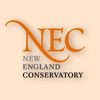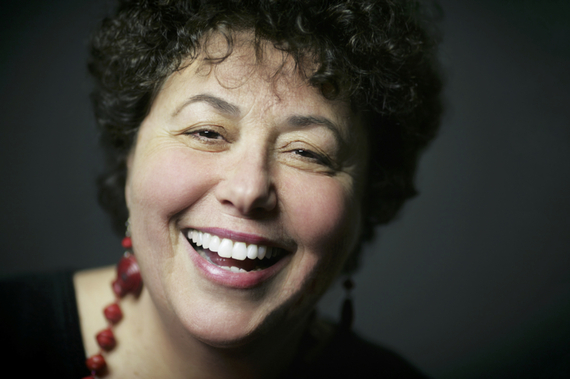The Rhythmical Creation of Beauty
By Ruth Lepson
The history of the lyric and of the separation between poetry and music in the Western world is complex and long. The relationship between both art forms and society is an ongoing topic.
Is the lyric the expression of the so-called lost communal voice or the individual voice, is it necessarily fragmented now to show the actual workings of the mind and of our alienated or fragmented life? Is the poem still capable of embodying a mystical pattern, the music of the spheres? Whom are we writing for, given the loss of community? Has poetry as an expression of feeling through sound come and gone? Where in the world will the next poetries appear?
These impossible but necessary questions inevitably come up in our wide-ranging discussion and writing of poetry at NEC.
"Poets who will not study music are defective," claims Ezra Pound. Can we say that musicians who do not study poetry are "defective"?
"The rhythmical creation of beauty"--so Edgar Allen Poe defined poetry. In this sense, it's a kind of music, and the Symbolists who influenced Poe (and vice versa) went so far as to insist it must be music before everything else, though some contemporary poetries have as their central aims other things. The Romantic poets before them thought of music as vague and fluid and actually used those qualities as models. Or, as the more recent poet Louis Zukofsky wrote about his poetics, "An integral/ Lower limit speech/ Upper limit music."
It's been said that poetry will continue to be read because in general it's short, and that, these days, people have time to read only short pieces.
Gertrude Stein said when you enjoy it you understand it. One reason for poetry courses at the college level is that some high school teachers turn poems into puzzles to be solved; our class concentrates on how sound creates/is meaning.
William Carlos Williams wrote that a poem is a machine made of words. Nothing extraneous.
Maybe ten years ago I attended a conference at Columbia University on contemporary poetry. There we listened to eco-poetry, queer theory poetry, radical women's poetry and other sorts of identity poetry, and the Language poets, and other radical, game-changing poets of the last forty years or so who examined every facet of language, taking nothing for granted. In addition some conceptual poets, who insist it's ludicrous to write a lyrical, subjective, personal poem in this world, subsumed under late capitalism, made their controversial thoughts heard. Not to mention digital and multi-media poetries.
Endless debate and energy in the world of poetry these days, though maybe no towering figures as in the 1950s and '60s. This is why I ask students in Contemporary American Poetry to buy an anthology, lately, Paul Hoover's Postmodern American Poetry, with the range of experiments taking place in recent decades, though first we back up to talk briefly about Walt Whitman, Gertrude Stein and William Carlos Williams, their precursors.
In the poetry workshop I leave the students alone. Accomplished musicians as they are, why give them exercises, though if they want some, they can have some. Better for them to listen to poets read on the http://writing.pennsound.edu/pennsound website and to incorporate what they already know.
Sound is what, to me, more than any other element, allows the reader to enter the poem, participate in it, whether conscious of that or not. Sound is rhythm or meter, vowels and consonants, syllables, repetition of all sorts, line break, tone, and so on--similar to aspects of music. We note (pun intended) phrasing, mood, rhyme, emphasis, syntax, voice, pitch, silence, reversal, juxtaposition, stress, speed, parallelism--all applicable to music. We talk about fundamental differences, too, equally important.
"Form is never more than an extension of content and content is never more than an extension of form," wrote the essential Robert Creeley, most musical of poets. What is "musical"? The students know. When they listened to poet George Oppen, Mat Maneri said, "The guy rocks." The class elaborated on that for forty minutes.
Poets and composers who have set poets visit the classes, including Creeley and Steve Lacy, who set Bob's poems to jazz, and who felt it his job to bring the lyric back to jazz.
Sometimes students write settings of poems. Four classes even made recordings of their settings in the NEC studio.
If there are songwriters in the group, we devote a few meetings to a discussion of poetry and lyrics--they bring in their favorite lyrics from lieder to folk song to rap-- and we argue about which ones are effective. As time goes on we incorporate more poetry from other parts of the world, and some students try their hand at translation, discussing their efforts with us, as translation involves some of the same choices as writing the poem does. The class poetry reading gives other students an opportunity to hear their friends' voices, and sometimes these creative transgressors go wild with sound poetry, for instance, Billy McShane and Pat Kuehn, who made their own vocalese tape.
Who takes the course? Some of the ablest students at NEC, curious about other art forms. Without this exposure to "culture," one can not be a complete musician--is that the case? Some poets say if you don't like it, leave it. There are other things in the world to attend to.
But the students do like it. When they try to convince us of something through overgeneralization, psychological jargon, or exaggeration, they fall flat. We go back to TECHNIQUES that shape, give us an experience. That means primarily sound, but of course imagery and figurative language as well.
In this media-driven, corporate world, here is expression that goes under the radar, attempting to convey things that actually can only be suggested, the subtle workings of the mind and of our world.
Creeley thought of the poem on the page as a musical score. Epic poet Charles Olson of Gloucester developed the idea of proprioceptive or projective poetry, poetry that comes from the body. Denise Levertov talked about organic poetry--every experience has its own form, and it's our work to discover that form when we write. Of course musicians who improvise are enormously sophisticated about this.
William Butler Yeats, though tone deaf, began by spouting nonsense syllables which morphed into actual syllables and then into words.
When musicians begin that way they are off and running.
Singer Michael Mayo, a rising star, took it upon himself to set up an NEC poetry page on Facebook. Have a look, and feel free to comment. Some students continue to write years after they graduate and send me poems; they want readers.
Today singer/pianist/composer Akenya Seymour posted her poem beginning "Black flower, this soil didn't root you/ no more than this sky embraced the crow...." And so it continues.
About Ruth Lepson
Ruth Lepson has been poet-in-residence at the New England Conservatory for 20 years. Her new book, ask anyone, is the record of Ruth Lepson's encounters with some of the musicians she has taught at New England Conservatory. For twenty years, she has worked in a world where words meet music and the results lead, often as not, to performance. At the Conservatory she befriended her colleague, the great soprano saxophonist and lover of poetry, Steve Lacy, who long collaborated with her poet-hero Robert Creeley. Creeley is ask anyone's guiding spirit, but the book's looseness, stretching out and swing is all Lepson. In ask anyone Lepson honors her lineage by bringing it into the here and now.
ask anyone is available for purchase at ruthlepson.com , simply click the "Shop" tab and select the tab below the book cover. The book also offers musical settings of Ruth's work by New England Conservatory alumni.

